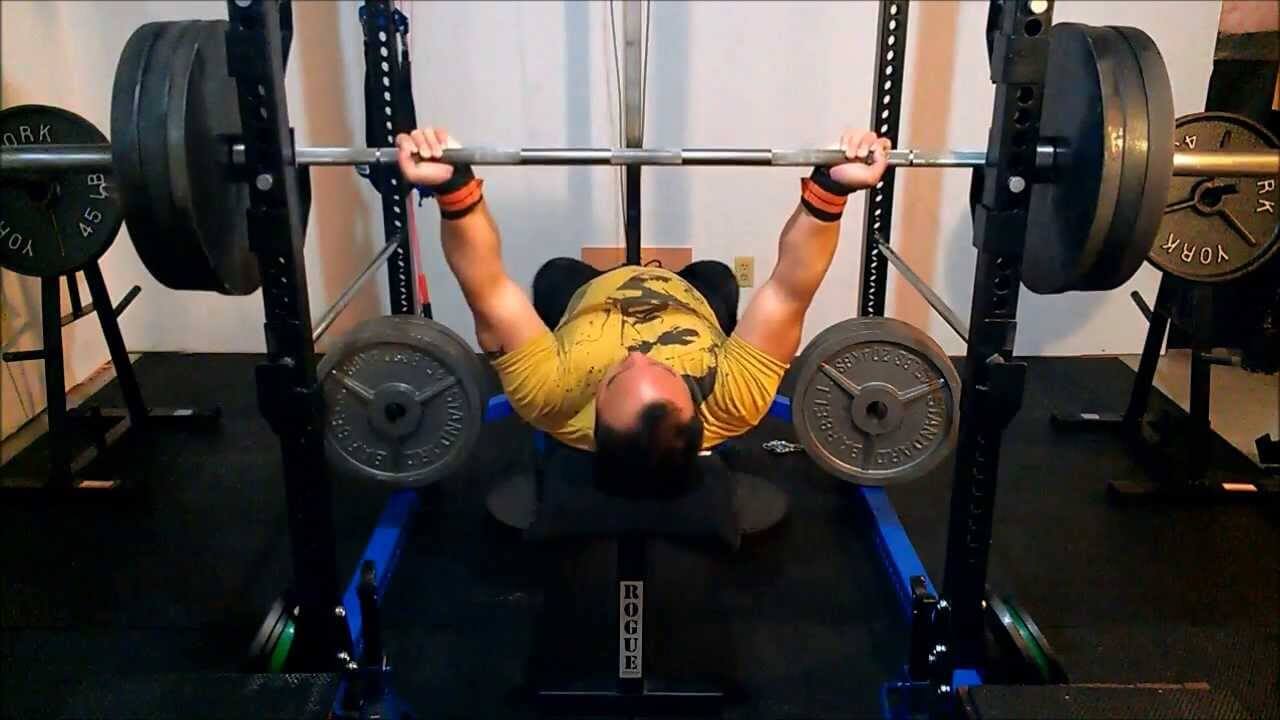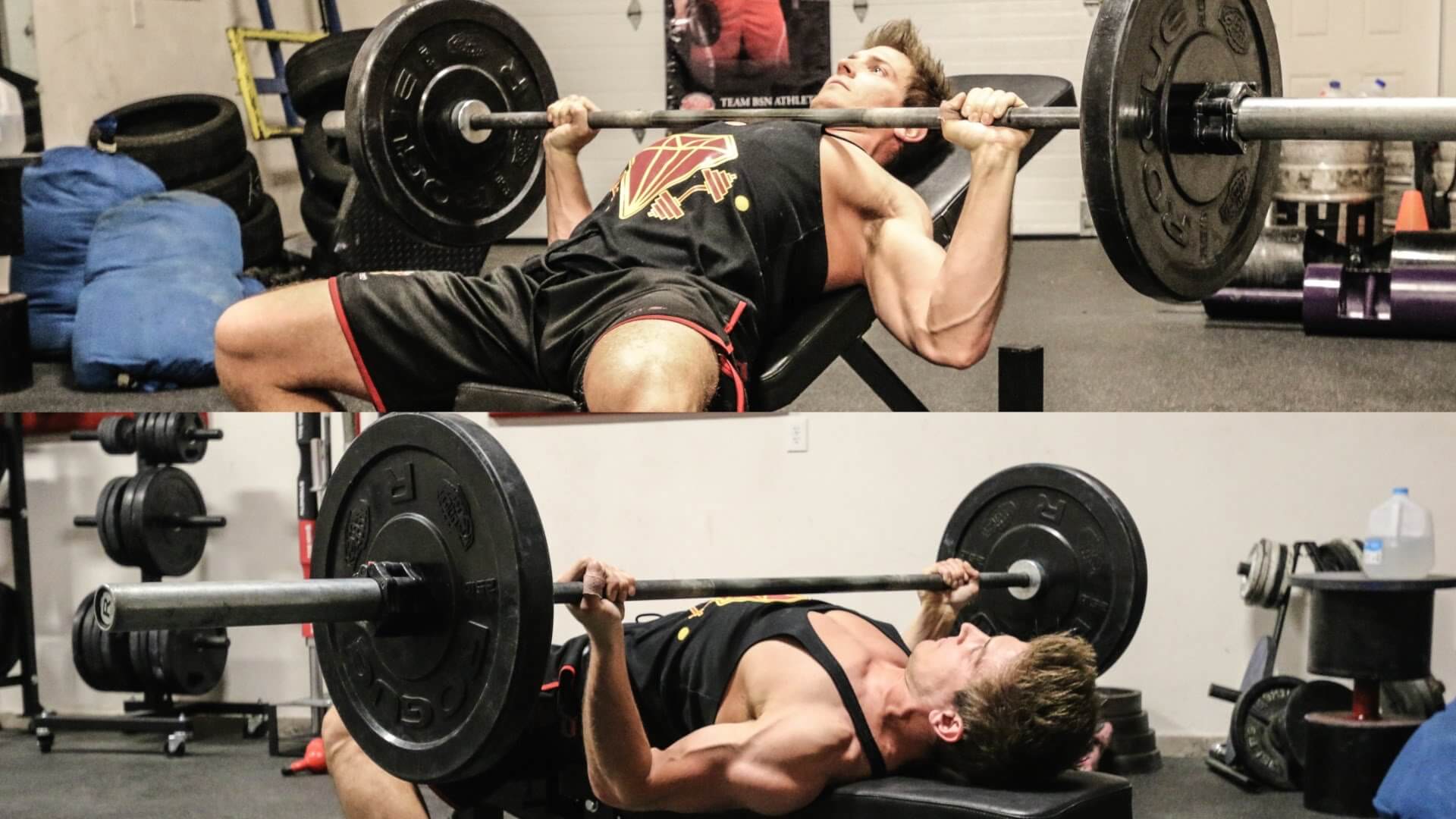Whether it’s upper body day or, more specifically, chest day, one of the first workouts you probably pump out is the bench press. Today we are going to talk about reverse grip bench press though and why you should add it to your workouts.
It’s an upper body staple as not only can you put up the most weight, but it allows you to work everything from your chest to your back, shoulders, arms and an assortment of stabilizing muscles. You may even switch up your arm width in order to put more focus and strain on your chest or biceps.
One thing you may not have tried though is a reverse grip bench press.
Naturally, when you change how you hold your weight it changes the kind of workout you receive. And everyone is looking for the fastest way to get muscles.
But what does a reverse grip bench press do, and should you add it to your upper body and your best chest workout days?
We’ve got all the answers and then some for you right here.
What is the Reverse Grip Bench Press?
If you’re like most people, you’ve done the bench press just about the same way ever since the first time you started lifting. Even if you’ve experimented with grips on other lifts, the bench press probably has stayed the same.
The reverse grip bench press changes nothing but your grip.
So, instead of pushing the weight with your forearms facing away from your body, this lift changes it up so your forearms are pointed towards your face. Other than a shift in the grip, there is absolutely nothing different in the move or how it is performed.
However, it does change the muscles hit (at least the target muscles) when performing the press.
What Muscles Do The Reverse Grip Bench Press Target?
The pectoral major remains the focus of the press.
As the barbell or dumbbells still is pushed up along the same path as the traditional grip, much of the tension is placed here. Much like the traditional press, if you’re using a barbell you can shift your hand placement in order to put more strain on your chest or on your arms. Realistically though there are two major differences in muscles hit.
For starters, because your forearms are to face you, this shifts where the weight is placed on your arms.
During a traditional bench press which is one of the best chest exercises for mass, when you push up you are using your biceps to assist in the lift (the exact amount depending on the grip width). The triceps are hit on the way down, but the amount of strain placed on the triceps is dependent on how slow you allow the weight to come back to your chest (the slower the more strain placed on the opposite muscle group, so your triceps and back are hit more during a slow decline of the weight to the chest).
With the reverse grip, your triceps now become the main arm muscles used when pushing the weight up.
Your biceps then become the reverse muscles and are affected on the way down.
The second big difference with this weight is your shoulders are almost completely bypassed. Typically, your chest, shoulders, and biceps are used to push the weight up. Due to the pivot in your forearm, your shoulders are almost completely eliminated in the lift.
This means more weight tension is placed on the pecs and your triceps.
Why Would I Want to Perform the Reverse Grip Bench Press?
With the removal of the shoulders from this workout you not only hit fewer muscles but you also likely won’t put up as much weight.
So why should you even consider performing the reverse grip bench press?
First, if you want to improve your triceps strength and size, this becomes a great exercise. Now, it is possible to maximize the effects of the bench press if you let the weight down slowly. You can cause a considerable amount of strain on your triceps if you lift slowly (even if you need to reduce your weight in order to lift slowly).
This strain helps strengthen and work the triceps, yet the primary muscles almost always receive the better work out so the back of your arms will experience an improved workout with the reverse grip.
The second major reason why you should consider this lift is if you have bad shoulders. Many people complain of shoulder pain, including if you have recently gone through a shoulder injury or surgery. The shoulders are used in a wide range of upper body exercises, and while you probably want to get back to lifting, you need exercises that avoid hitting the shoulders.
The reverse grip bench press allows you to do exactly that.
Who Should Avoid the Reverse Grip Bench Press?
Alright, so if you suffer from shoulder pain or have had some sort of surgery performed on your shoulder in recent months the reverse grip bench press may be a desirable alternative lift for you to add to upper body days.
Does that mean there are those on the flip side of the spectrum who should avoid the lift?
Whenever working with multi-joint lifts there will be a handful of people who should probably move on to the next exercise. That is true of you if you suffer from wrist pain. With a traditional bench press, you can limit wrist pain by keeping your hands locked in with your forearms, creating a unified, straight arm and wrist combination. This cuts down on the amount of weight pulling on the wrist. This is not as easily done with the reverse grip bench press.
Your wrists, while facing you, should have a slight bend to it.
This is to help prevent the chance of the weight slipping out of your grip and onto your face and upper body. If you lower the weight you may be able to keep your forearms and wrist flush together in order to reduce the tension on your wrist, but as the grip opens up towards your face, this is a bit more difficult.
The weight will naturally try to slide down, out of your grip, which may expose you to an even greater chance for injury.
How to Perform the Reverse Grip Bench Press
Chances are you’ve already performed a traditional bench press, so this shouldn’t be too different. It is recommended for you to go lighter on the weight though until you know just how the shift in grip will affect your lifting ability.
Lay on the flat bench (although you can take advantage of the reverse grip on both an incline and decline bench if you’d like to work the triceps and even real delts with these lifts) and grab hold of the bar using your reverse grip (you can also refer to it as a supinated grip as there may be some in the gym that refer to a reverse grip as a supinated grip).
Push the barbell up to the starting position. Hold it here for a moment as your arms adjust to the weight.
Because your upper body is so used to the standard grip muscle memory may attempt to make unnecessary corrections, so allow your body to become acquainted with the grip and lift (another reason to start off with lighter weight). While lifting the weight make sure your elbows do not flare out. This is more likely to happen with this grip, so be mindful of your elbow position.
When you push the weight to the starting position keep a slight bend in your elbows.
Do not lock your elbows.
This not only avoids potential injuries but it keeps your entire upper body engaged throughout the duration of the lift.
Slowly lower the weight down. Do not drop it down. Slowly lowering the weight works the transverse muscles, including your biceps and back. Keeping your elbows tucked in here will help prevent the flare outs.
When you lower the weights down you can touch the barbell to your chest but do not rest it here. Simply tap and push back up. When pushing the weight back up you’ll want to maintain a slight backward arc. This helps with controlling your elbows in addition to preventing the weight from rolling towards your face.
Upon reaching the starting position again this is one rep.
Reverse Grip Variations
Are you someone who works out at home?
Perhaps you’re not a fan of the giant barbell or the dudes grunting while putting up massive weights at the gym is a bit intimidating. Whatever the reason may be, there are some various options you can go with over the barbell version.
For starters, there is the dumbbell reverse grip bench press.
Dumbbells are excellent to use as it works each side independently, preventing your weaker side from leaching onto the stronger side. This helps keep both sides performing the same amount of lifts and putting in the same amount of effort. The one down side when using dumbbells for a bench press is you probably won’t be able to put up as much weight.
Thankfully, you can still use dumbbells for your reverse grip press though.
Just be aware because you don’t have the single bar to stabilize the lift your elbows will become more inclined to flare out, so pay extra attention to this. If you need to keep the dumbbells touching one another to avoid flare outs that is fine (ideally the weights won’t touch, but if you need some help when starting out you can use this small cheat as it just reduces the chance of the weights falling outward, away from your body).
You can also go with the Smith machine if you’d like. This is fine in a pinch and it will help you with controlling the amount of weight placed on your wrists, but you miss out on working your stabilizer muscles at the same time.
Workout Example Using A Reverse Bench Press Grip
This is a lift you are going to do instead of the traditional grip bench press. Because of this, the reverse grip bench press will be your flagship lift for chest day. Due to this, you’ll want to perform the lift in 3 – 4 sets. The number of reps per set will depend on what kind of results you’re targeting.
The number of reps and how many sets per muscle group you should be doing for gains will depend on goals.
If you want to target strength specifically, lift heavier. Shoot for around one to four reps per set. Again, the first time you perform the reverse grip bench press make sure you go lighter as it is a bit different and you’ll need your body to adjust to these slight changes.
If you’re going for size gains you’ll want to shoot for around eight to 10 reps. If you hit anything more than 12 you’re not going to see the kind of size gains you’d like More than 12 and you’ll just maintain your muscle consistency (muscle endurance).
8 to 12 is perfect for muscle hypertrophy as you’re still lifting heavier weights and challenging your muscles while breaking down the muscle fibers to a greater extent. More than 12 and you’re not challenging yourself, which means you’re not breaking down the muscle fibers as much and focusing more on muscle endurance.
More than 12 and you’re not challenging yourself, which means you’re not breaking down the muscle fibers as much and focusing more on muscle endurance.
Conclusion
When it comes to working out, it is extremely important to continually change up your lifts in order to target muscles in slightly different ways.
Muscles do adapt to your lifts and, over time, you won’t see the same kind of results you once did.
In order to keep your results coming, constantly changing your lifts is a must. The reverse grip bench press is a slight shift from your traditional bench press, but the change in grip helps target your triceps while hitting your chest as well.
While this lift is not a must for everyone if you suffer from shoulder problems or just want to spice up your lifting routine, feel free to toss in the reverse grip bench press during your next chest day. You may end up liking the lift so much you end up adding a reverse grip to your incline bench press and decline bench press lifts as well.
-Terry Asher
Terry Asher
Latest posts by Terry Asher (see all)
- Better Family – Product Review Liquid Daily 2 oz - Dec 16, 2024
- Post-Workout Recovery: The Key to Optimal Performance - Nov 25, 2024
- Pre-Workout Supplements – Everything You Need To Know - Nov 18, 2024













[…] post Reverse Grip Bench Press Add It To Your Arsenal Now appeared first on Gym […]
A little tight in my wrists, but with a proper weight, 135 for me, and a shorter range of motion it felt great!!!!
I’m gonna try this with dumbells too!!!
Awesome let us know Z!
-Terry Asher